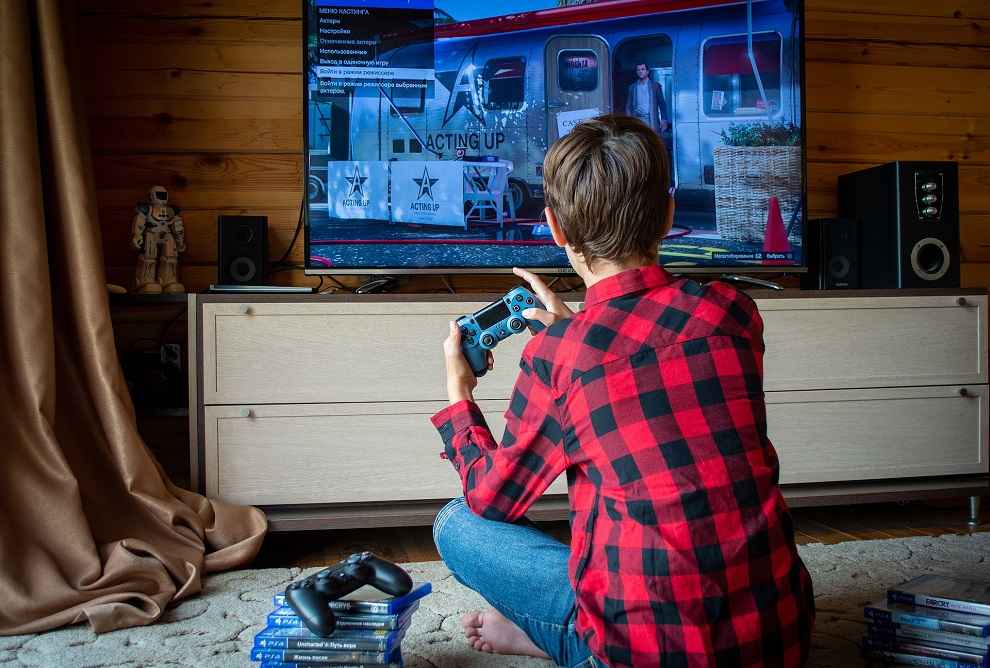Gamification: The New Gen Education?
We take a deeper look at how the world of gaming and education collide
Going by definition, gamification is the process of having pieces that makeup games, making them interesting for players, and then applying those same elements to influence behaviour in non-gaming contexts.
Can “boring” and complicated topics be straight up gamified and made simple?

How many times have you had this strange experience, where a concept taught inside a video game brings more sense and alacrity than a classroom lecture ever did? And if you can relate to this, you are not the one to blame. In fact, it just goes on to assert how even the same lessons, depending on their demonstration and implementation, can be either ardent or downright… boring.
 Survey
SurveyBut how does this work? Can all of these so-called “boring” topics be straight up gamified and made simple? Where do we draw a line to this practice? Is this the much needed new-gen revolution to the existing education system? And, most importantly, is this really an ideal solution? Let’s plunge into the depths of this concept and discover more about this practice.
The idea
Going by definition, gamification is the process of having pieces that makeup games, making them interesting for players, and then applying those same elements to influence behaviour in non-gaming contexts. Gamification, in other words, is the addition of game features to a normally non-game environment. Meanwhile, gamification of learning is an educational strategy that uses video game-inspired design and elements in a learning environment to inspire students while superlating their enjoyment and engagement. The aim here is to captivate their attention and make complex stuff compelling/fun to learn while motivating them to continue learning. Game-based learning is another active learning strategy in which games are utilised to help students learn more effectively. Learning occurs as a result of playing the game, which encourages critical thinking and problem-solving abilities. Game-based learning can be done with digital or non-digital games, and it can also involve simulations that allow students to get a personal experience with the content. It should come as no surprise that learning is best while enjoying it and thus, gamified or game-based topics and lessons often yield better results than the conventional way of teaching.
How do we gamify things?
As with most teaching methods, gamifying stuff can come in steps too. These are namely:
Assessing the hard-to-get points and problems in the given topic, and identifying the environment while acknowledging the interest of the learners.
Introducing structure into the concept by setting up goals or checkpoints.
Defining progress by using game-like systems of “levels”, “scores” or “stages”.
Organising interactive activities and encouraging the formation of teams to tackle problems.
Reflecting the progress using trackers such as leaderboards, level and high scores, alongside introducing rewards into play for achievements of desirable outcomes.
The benefits
Games naturally intrigue a student’s mind and give the idea of ‘learning together’ a much-needed brush-up. Even if unintentionally, introducing competitiveness in academics often leads to conflict, pressure and disunity amongst students as they end up squashing each other, in an attempt to climb that grade ladder. Gamified subjects can change this to healthy competition by introducing playful barriers instead. Such barriers can be behavioural, social, private, logistical or even creative. This also induces a relaxed atmosphere in regards to failure which ensures that the learners wouldn’t be afraid to try their hands on the problem again, uncovering an intrinsic motivation for learning. Being more proactive and open to making mistakes also invites the opportunity to think outside of the box. Besides that, morphing activities into games makes comparing and reflecting on personalised performance a whole lot easier. Using game mechanics inspired roadmaps, like checkpoints and levels, and reward systems also promise sustained contribution from the students. The content meant to be taught is also delivered much more efficiently for students who find processing information from textbooks and excerpts tedious. The process is also very tangible and rewarding students for achieving small milestones helps retain their attention on the subject. These rewards can be as naive as an excuse from a day’s homework but still give a sense of validation and achievement. Gamifying subjects can be fairly simple too by identifying the behaviour you wish to encourage in a student and rewarding them for achieving the same. The idea here is to give the students a sense of ownership over their learning and make the whole experience simply… fun.
The restrictions
Given the social connections, immediate feedback system and assimilating learning process, what makes most of today’s smart learning still inspired by archaic methods instead? It is so because, while gamification and gamified topics might be ideal to assuage elementary basics of a topic, it can soon become pretty challenging to sustain in the longer run. Also, the more creative investment the topic calls for, the harder it gets to scale its activities. Gamification is exceptionally good to break down complex or dull topics but it equally calls for greater efforts and creative investments from the teacher. Not everyone would be willing to sacrifice an established bubble of instruction to try and adopt this new creative approach to the same problem. With the intended creative approach, it becomes a pretty procrustean task to keep up with innovative ideas which in turn will incite enough interest. Thus, the practice is not very scalable and far from being an ideal solution. What can instead be done is inculcate certain gamified practices selectively for the vexing problems in a classroom.
Wrap-up
Gamification has been found to be extremely beneficial in a variety of situations, including educational settings, e-learning environments, and even corporate training. It works because it elicits genuine, strong human emotions like joy, intrigue, excitement, and accomplishment while making use of existing and limited technologies. Gamification is being used by many organisations, institutions, and brands all around the world, with remarkable outcomes. There is plenty of potential for experimentation when it comes to what you gamify and it helps bring engagement and motivation to the field more often than not. Even if the students aren’t interested in gamified classes they might take interest in gamified projects which enhances the lesson plans. Gamifying most topics can be fairly simple too, making it a considerable update in an existing curriculum to yield exceptional results.


